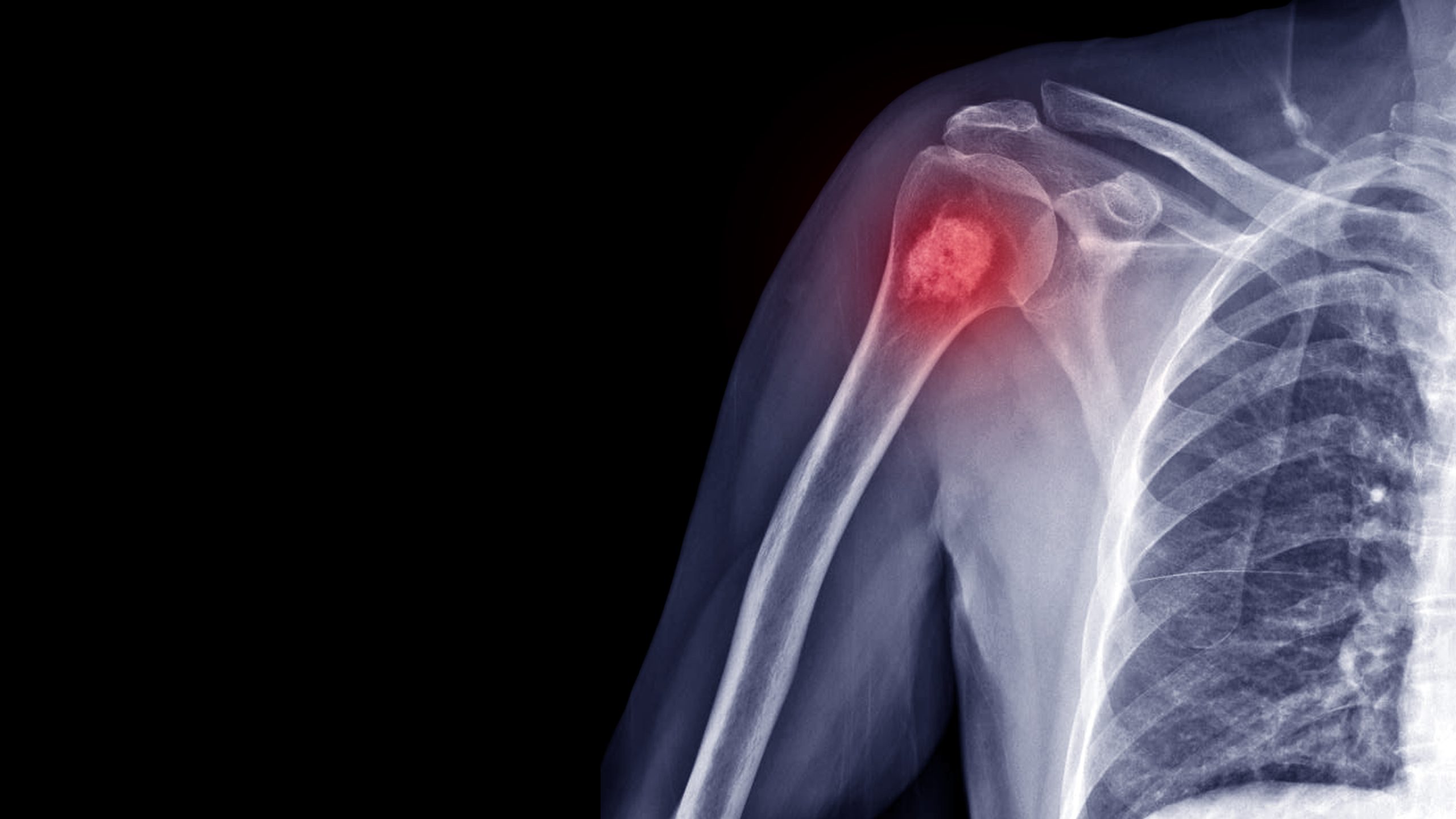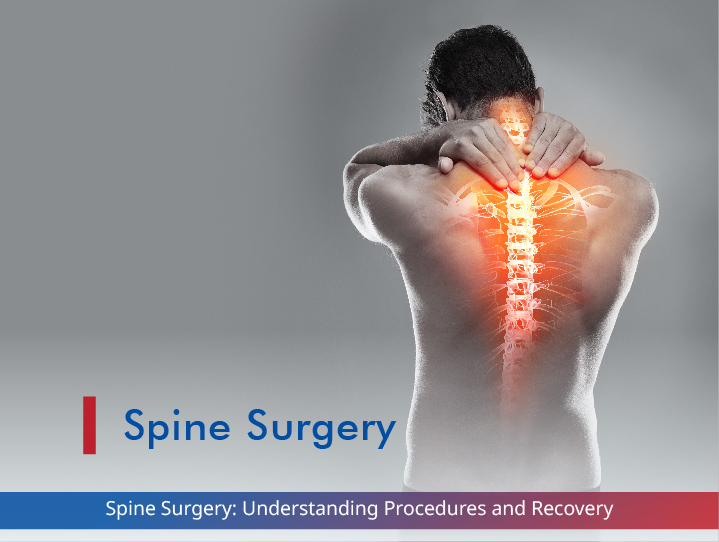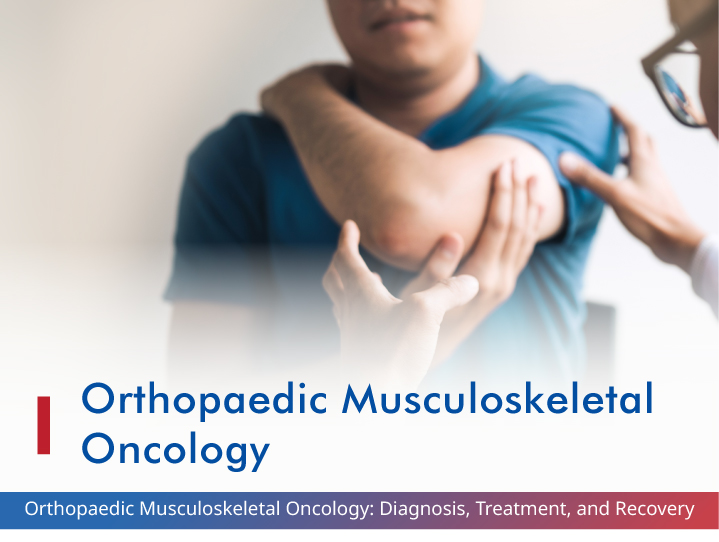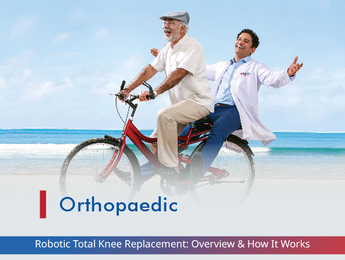Introduction
Orthopaedic or Musculoskeletal Oncology is a specialized field that focuses on diagnosing and treating tumours affecting the bones, muscles & soft tissues of the human body. This complex and niche specialty requires a multidisciplinary approach, combining the expertise of orthopaedic surgeons, medical and radiation oncologists, radiologists, pathologists & other specialists to provide comprehensive care for patients with musculoskeletal tumours.

Understanding Musculoskeletal Oncology
Musculoskeletal oncology encompasses a wide range of conditions, from benign (non-cancerous) tumours to malignant (cancerous) tumours of the bone and soft tissue, anywhere from head to toe. Bone tumours can originate in the bones (primary tumours) or spread to the bones from other areas (metastatic tumours). Some common types of musculoskeletal tumours include:
- Osteosarcoma: The most common primary bone cancer, typically affecting children and young adults.
- Ewing Sarcoma: The second most common primary bone tumour, primarily affecting children and adolescents.
- Chondrosarcoma: A cancer that develops in cartilage cells on the bone. Mainly seen in adults.
- Soft Tissue Sarcomas: Cancers that develop in soft tissues such as muscles, tendons, and ligaments.
- Metastatic Bone Disease: Cancer spreads to the bones from other parts of the body, such as breast, lung, or prostate cancer.
Diagnosis of Musculoskeletal Tumours
Early and accurate diagnosis is crucial in Musculoskeletal Oncology. The diagnostic process typically involves:
Clinical Evaluation:
- A thorough physical examination & medical history review.
Imaging Studies:
- X-rays: Often the first imaging test used to detect bone abnormalities.
- MRI (Magnetic Resonance Imaging): Offers high-resolution images of the area of interest & can evaluate the extent of tumour involvement.
- CT (Computed Tomography) Scans: Provide detailed cross-sectional images of the affected area.
Biopsy:
- A crucial step in diagnosis which involves a small sample of extracted tissue for microscopic examination. Types of biopsies include:
- Needle Biopsy: Less invasive, using a thin needle to extract a tissue sample.
- Open Biopsy: A surgical procedure to remove a larger tissue sample. (Rarely performed)
- After biopsy procedure, a pathologist examines the biopsy sample to determine the type and grade of the tumour. Sometimes additional tests like Immunohistochemistry or molecular studies can be needed.
Staging:
- Determining the extent of the disease.
- PET (Positron Emission Tomography) Scan: This is to see if the tumour has spread to, or arising from some other are in the body.
- Bone Scans: Used to detect areas of increased bone activity, which may indicate a tumour.
Treatment Options for Musculoskeletal Tumours
Treatment for musculoskeletal tumours varies based on the type, location, and stage of the tumour. An orthopaedic oncologist develops and implements a comprehensive treatment plan, after thoroughly evaluation and discussion of each and every case in the Musculoskeletal Tumour Board. The following are common treatment modalities:
Surgery:
- Almost all bone tumours need surgical removal of tumour from the body
- Limb-salvage or Limb-sparing Surgery: The goal is to remove the tumour while preserving the affected limb’s function. This may involve tumour resection (removal) using sophisticated techniques like Computer-assisted surgery, Intra-operative navigation, 3D-printed tumour models and cutting guides. After tumour removal the limb is reconstructed using complex techniques such as:
- Recycled autografts (patient’s own bone)
- Allograft (Bone from a bone-bank)
- Modular Endoprosthesis (Metal implant)
- Custom-made or 3D-printed Prosthesis
- Curettage: Scraping out the tumour, often used for certain benign tumours.
- Amputation: Very rarely, in some cases, amputation may be necessary if limb-sparing surgery is not possible or would result in poor function.
Chemotherapy: For Malignant bone tumours
- Neoadjuvant chemotherapy: Given before surgery to decrease the tumour size.
- Adjuvant chemotherapy: Administered after surgery to eliminate remaining cancer cells.
Radiation Therapy:
- External Beam Radiation: Precisely targeted radiation to destroy cancer cells.
- Brachytherapy: Implanting radioactive material directly into or near the tumour site.
Targeted Therapies:
- Drugs designed to target specific mutations or proteins in cancer cells
Immunotherapy:
- Bolstering the body’s immune system to fight cancer cells.
Radiofrequency Ablation:
- Using radio waves (heat energy) to destroy tumour cells.
Recovery and Rehabilitation for Musculoskeletal Tumours
Recovery from musculoskeletal tumour treatment can be a long and challenging process. The rehabilitation phase is crucial for restoring function and improving quality of life. Key aspects of recovery include:
Physical Therapy:
- Exercises to improve strength, flexibility, and range of motion.
- Gait training for patients who underwent lower limb surgery.
Occupational Therapy:
- Helping patients regain independence in daily activities.
- Adapting to any physical limitations resulting from surgery.
Pain Management:
- Medications (oral or IV) and techniques to control post-operative and chronic pain
Prosthetics and Orthotics:
- Fitting and training with prosthetic limbs for amputees.
- Custom orthotics to support affected limbs.
Psychological Support:
- Counselling to address emotional and psychological challenges.
- Support groups for patients and families.
Nutritional Guidance:
- Ensuring proper nutrition to support healing and overall health.
Regular Follow-up:
- Monitoring for tumour recurrence and managing long-term effects of treatment.
Patients with Bone and Soft tissue tumours (Musculoskeletal Oncology)
These patients usually presents with unique challenges. They often face:
- Physical Limitations: Grossly restricted mobility and function.
- Emotional Impact: Dealing with anxiety, depression, and fear of disease and recurrence.
- Social Adjustments: Changes in relationships and social roles.
- Financial Considerations: Managing treatment costs and potential loss of income.
- Long-term Health Monitoring: Regular check-ups and scans to detect any recurrence.
Support from doctors, family, and support groups is crucial in navigating these challenges.
Conclusion
Orthopaedic or Musculoskeletal Oncology is a complex and niche field requiring a multidisciplinary approach to provide the best possible patient outcomes. Advances in surgical techniques and innovations, imaging technologies, and targeted therapies have significantly improved the prognosis for many patients with musculoskeletal tumours. However, the journey from diagnosis through treatment and recovery can be challenging. Patients can achieve good & happy lives and functional outcomes with expert care from orthopaedic oncologists and a comprehensive support system.
FAQs
What is the meaning of Musculoskeletal Oncology?
Musculoskeletal oncology is a specialized field of medicine that focuses on diagnosing, treating, and managing tumours affecting the body’s bones, muscles, and soft tissues. It combines expertise from orthopaedic surgery and oncology to provide holistic care for patients with benign & malignant tumours of the musculoskeletal system.
What are cancers of the musculoskeletal system?
Cancers of the musculoskeletal system include:
- Primary Bone Tumours/ Cancers: Osteosarcoma, Ewing sarcoma, Chondrosarcoma
- Soft Tissue Sarcomas: Affecting muscles, tendons, fat, blood vessels, and other connective tissues: Synovial Sarcoma, Liposarcoma, Fibrosarcoma, Rhabdomyosarcoma
- Metastatic Bone Disease: Tumour that has spread to the bones from other body organs
- Multiple Myeloma: A cancer of plasma cells that often affects bones
- Lymphoma: Can sometimes involve bones or soft tissues


















